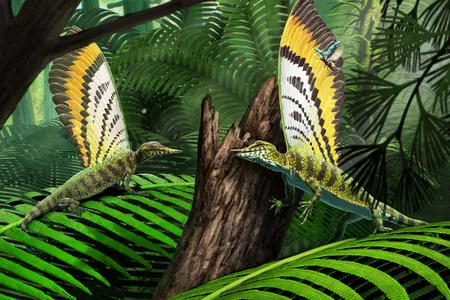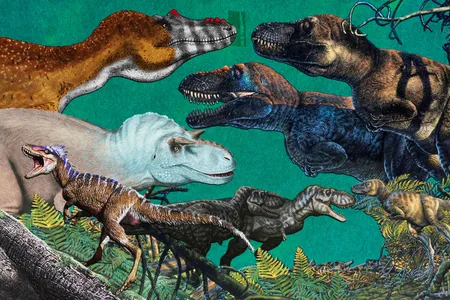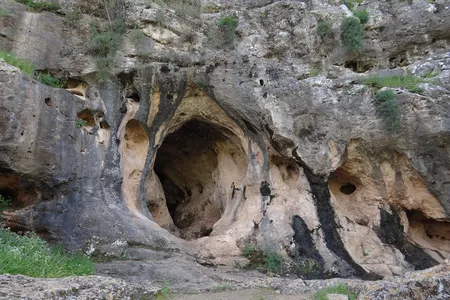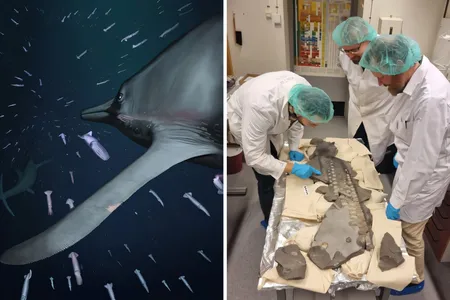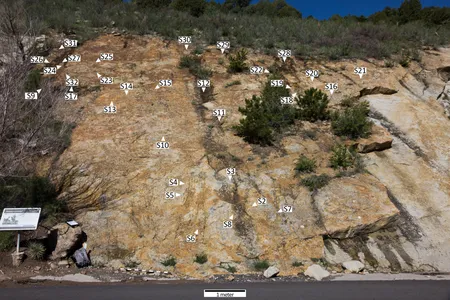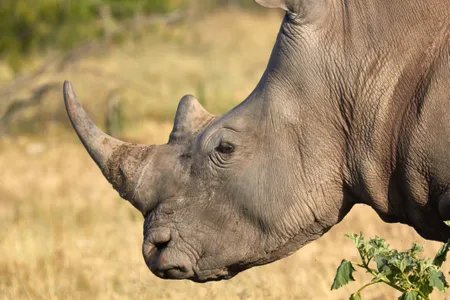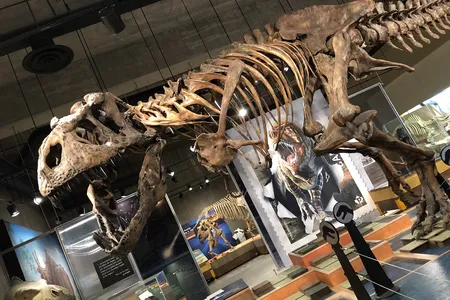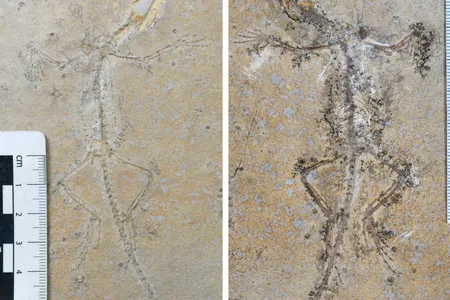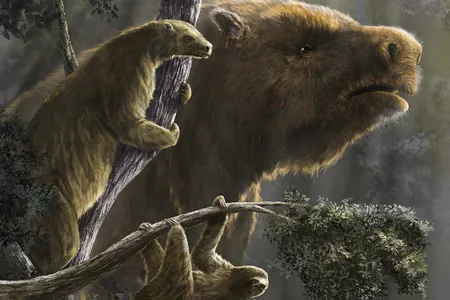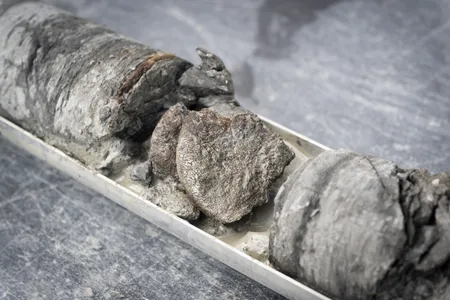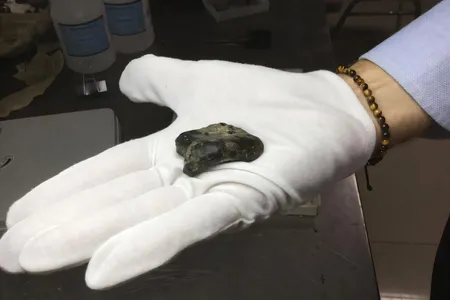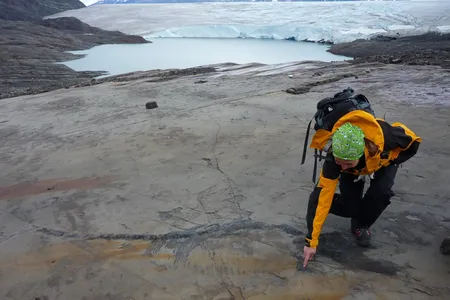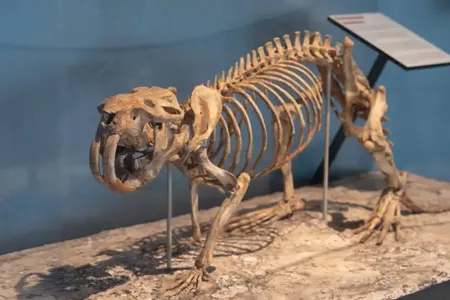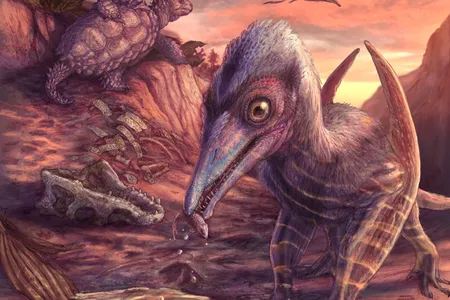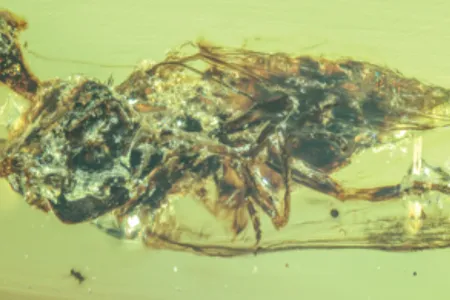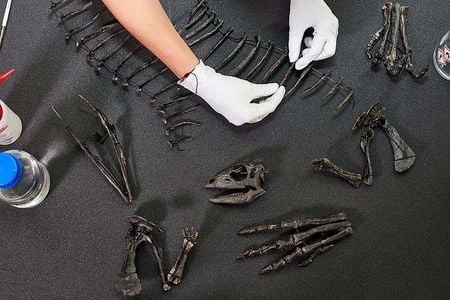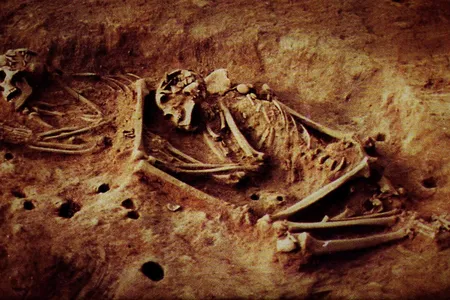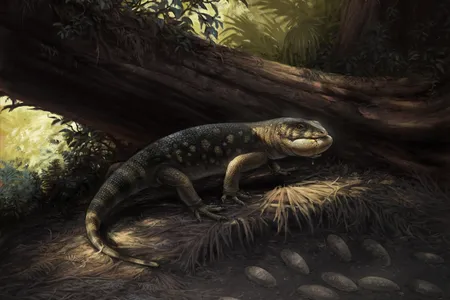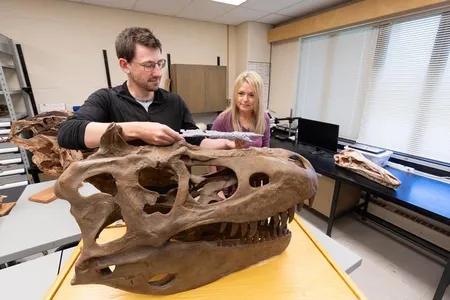This Surprising Ancient Reptile Had a Colorful, Corrugated Sail on Its Back. New Research Suggests It Was Used to Communicate
A 247-million-year-old fossil from a German natural history museum reveals the secrets of Mirasaura
Meet Ten Tyrannosaurs That Came Before T. Rex, From Small, Feathery Creatures to 30-Foot-Long Bone-Crushers
Everyone knows the famous tyrant lizard king, but its relatives amaze, too
A Child’s Skull That Has Long Confounded Archaeologists Might Be a Human-Neanderthal Hybrid, Study Suggests
According to new CT scans and models, parts of the 140,000-year-old skull resemble those of modern humans, while the jaw appears to be more similar to those of our extinct relatives
Fossil Flipper Reveals Ichthyosaurs Hunted in Lethal Silence With Unique Adaptations for Stealth
An analysis of a roughly 180-million-year-old fossil fin reveals serrations and flexibility that might have served to dampen sound as the predator swam
Dinosaurs Gathered to Perform Mating Dances With Kicks and Spins at This Site in Colorado—and You Can Go See It for Yourself
Paleontologists have discovered what appears to be one of the largest dinosaur courtship arenas in the world, just 15 miles west of Denver
Scientists Recover Ancient Proteins From Animal Teeth Up to 24 Million Years Old, Opening Doors to Learning About the Past
Two new papers analyze fossils found in Canada and Kenya, respectively—vastly different environments for the preservation of genetic material
Preserved Blood Vessels Discovered in a Rib Bone From the World’s Largest T. Rex Could Shed Light on How Dinosaurs Healed
Scotty, a specimen unearthed in Canada, was probably injured in a fight, then died several months later
A Paleontologist Matched Two Halves of the Same Fossil Stored at Different Museums—and Discovered a New Species
Meet Sphenodraco scandentis, a tree-dwelling, lizard-like reptile that roamed around with the dinosaurs during the Late Jurassic period roughly 145 million years ago
Giant Sloths and Many Other Massive Creatures Were Once Common on Our Planet. With Environmental Changes, Such Giants Could Thrive Again
If large creatures like elephants, giraffes and bison are allowed to thrive, they could alter habitats that allow for the rise of other giants
‘Nothing Short of Magical’: Scientists Discover a Dinosaur Bone Nearly 800 Feet Beneath a Parking Lot at a Denver Museum
The partial vertebra appeared inside a 2.5-inch-diameter column of rock that researchers drilled, earning the title of the oldest and deepest dinosaur fossil found in Denver
A Massive Underwater Fossil Find Includes Remains From Ancient Human Ancestors
More than 6,000 animal fossils were found in Indonesia, and two of them belong to Homo erectus
A Rare, Pregnant Ichthyosaur Fossil Discovered in Chile Is Revealing More Secrets About the Early Cretaceous World
The fossil helps scientists better understand not just the animal, but our planet’s geology
Bear-Sized Giant Beavers Once Roamed North America, and They’re Now the Official State Fossil of Minnesota
The large, extinct creatures roamed the Twin Cities area more than 10,000 years ago and could grow to more than 200 pounds
A Bone Bed From the Dawn of the Dinosaurs Has Revealed the Oldest Known Pterosaur Found in North America
Fossil surprises abound in new research that unearths the history of the Triassic Period
Rare Amber Fossils Capture ‘Zombie’ Fungus Infecting Insects During a Time When Dinosaurs Still Walked the Earth
An ant and fly from the Cretaceous period offer insights into the history of Ophiocordyceps, the fungal parasite made popular by HBO’s “The Last of Us”
‘Enigmatic’ Dog-Sized Dinosaur Reveals a New Species That Scampered Around Jurassic North America
The speedy, plant-eating creature lived in what is now Colorado roughly 150 million years ago, and its skeleton went on display in London this week
Ancient DNA Reveals Mysterious New Group of Humans in Colombia With No Genetic Ties to People Today
The previously undocumented lineage of hunter-gatherers seems to have disappeared around 2,000 years ago
Iconic ‘Dragon Man’ Skull Offers First Glimpse of What a Denisovan’s Face Looked Like, New Genetic Studies Suggest
The mysterious ancient humans were only known from fossil fragments. Now, two papers argue a skull uncovered in China belongs to this group, after examining preserved DNA and proteins
A Jar of Fossil Bones Long Stored at a Museum Led Scientists to Discover a Goblin-Like Lizard From 76 Million Years Ago
Fossils described in a new study speak to a previously unknown large-bodied lizard diversity that existed alongside dinosaurs
These ‘Dragon Prince’ Fossils Spent Decades in Museum Drawers. Now, They Could Rewrite the T. Rex Family Tree
Two partial skeletons housed in a Mongolia museum were reexamined by researchers and found to represent a previously unknown species
Page 1 of 57
